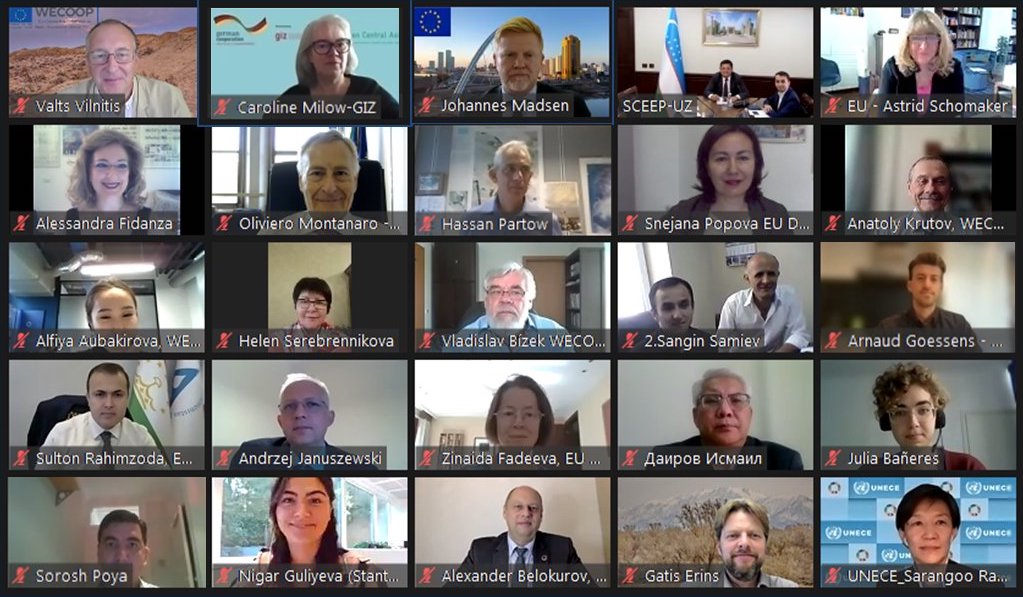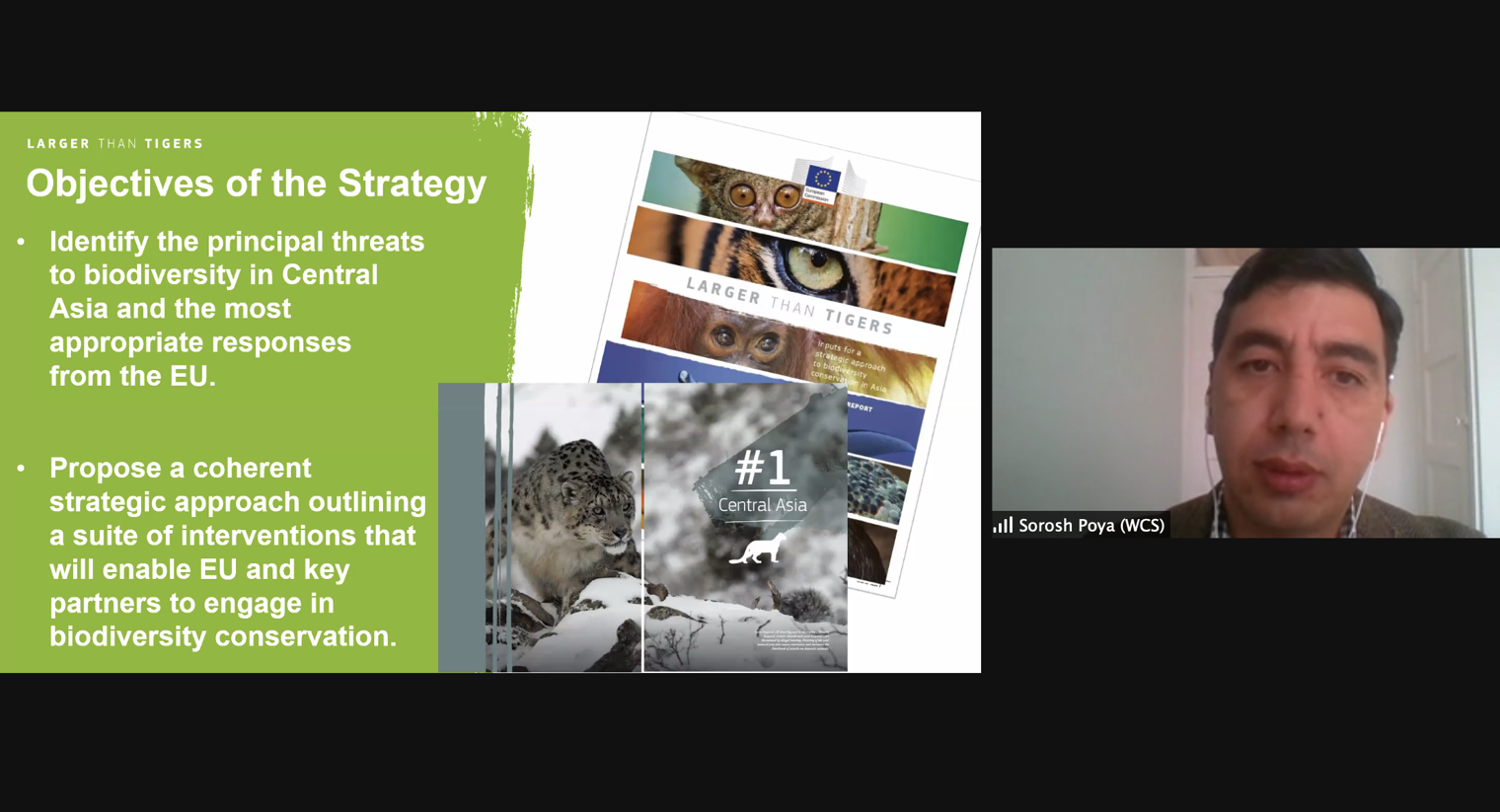10th Meeting of the EU-CA WGECC
The 10th meeting of the European Union ‒ Central Asia Working Group on Environment and Climate Change (WGECC) addressed new opportunities for cooperation to ensure a green recovery around four items: Biological diversity, Climate change, Decoupling economic growth from the increase of pollution, Toolbox for sustainable recovery.
The 10th meeting of the European Union ‒ Central Asia WGECC, which took place on 4-5 October 2021, is the first major event in the framework of EU‒CA Platform for Environment and Water Cooperation after the start of the COVID-19 pandemic, which has significantly changed both economy and environment worldwide. Government officials from the European Union, Central Asia and EU Member States, international financial institutions, as well as international and regional partners and civil society representatives joined the meeting co-chaired by the European Commission, the Italian Ministry for Ecological Transition (IMET) and the Ministry of Ecology, Geology and Natural Resources of the Republic of Kazakhstan.
More information is available here.
Speakers included, among others:
- H.E. Ambassador Terhi Hakala, EU Special Representative for Central Asia
- Mr. Akhmetzhan Primkulov, Vice-Minister, Ministry of Ecology, Geology and Natural Resources of the Republic of Kazakhstan
- Ms. Astrid Schomaker, Director, Global Sustainable Development, Directorate-General for Environment, European Commission
- Mr. Oliviero Montanaro, Director General, Italian Ministry for the Ecological Transition
- Mr. Sorosh Poya Faryabi, Conservation and Science Manager, WCS Afghanistan

Mr. Sorosh Poya Faryabi, Conservation and Science Manager at WCS Afghanistan presented the EU's flagship 'Larger than Tigers' study - regional strategy for biodiversity conservation in Central Asia. The main objectives of this report are:
- Identify the principal threats to biodiversity in Central Asia and the most appropriate responses from the EU.
- Propose a coherent strategic approach outlining a suite of interventions that will enable EU and Key partners to engage in biodiversity conservation .
The area covered by the Central Asia report includes, Afghanistan, Kazakhstan, Kyrgyzstan, Tajikistan, Turkmenistan, Uzbekistan and eastern portion of Iran. However, the majority of recognized key Landscape for conservation and priority regions for conservation are within the 5 countries of Kazakhstan, Kyrgyzstan, Tajikistan, Turkmenistan and Uzbekistan.
The region represents 3 of the world’s biogeographic realms, The Palerarctic, Indo-Malayan and Afrotropic, supporting an extraordinary diversity of ecosystems and species, such as natural lakes, steppe, cold desert, high Mountains and the last remaining stands of wild fruit, nuts tree and Tugai forest.
The report identifies 3 main categories of threats to this remarkable diversity:
- Loss of habitat, mainly as a result of agriculture, mining and urban growth;
- Degradation of habitats from unsustainable logging, over-grazing, pollution growth and movement, disease (major problem for wildlife & domestic livestock), invasive species & disruption of migration routes (through linear infrastructure);
- Direct over-exploitation of species mainly through unsustainable hunting sometimes fueled by illegal wildlife trade such as ground tortoises or falcons.
 Mr. Sorosh Poya Faryabi, Conservation and Science Manager at WCS Afghanistan presenting at the 10th meeting of EU-CA WGECC
Mr. Sorosh Poya Faryabi, Conservation and Science Manager at WCS Afghanistan presenting at the 10th meeting of EU-CA WGECC
TWITTER
WECOOP
WCS EU